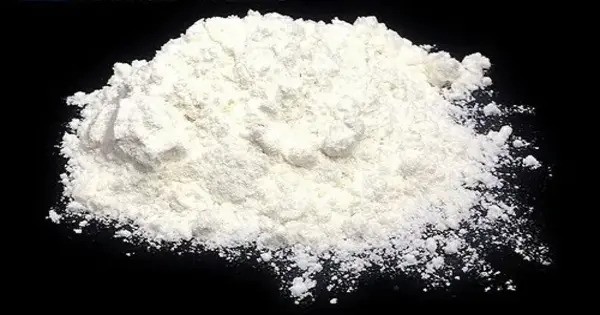Scandium bromide, or ScBr3, is a trihalide, hygroscopic, water-soluble chemical compound of scandium and bromine. It is an ionic compound that typically exists in a crystalline form. It typically appears as a white to colorless solid in its pure form. However, when exposed to moisture, it can sometimes take on a slightly yellow or light brown tint.
Properties
- Chemical formula: ScBr3
- Molar mass: 284.67 g/mol
- Appearance: anhydrous powder
- Density: 3.914 g/cm3
- Melting point: 904 °C (1,659 °F; 1,177 K)
- Solubility in water: soluble
- Solubility: soluble in ethanol
Preparation
ScBr3 is produced through the burning of scandium in bromine gas.
2 Sc(s) + 3 Br2(g) → 2 ScBr3(s)
Scandium bromide can also be prepared by reacting excess hydrobromic acid with scandium oxide, and the hexahydrate can be crystallized from the solution. The thermal decomposition of hexahydrate can only yield scandium oxybromide (ScOBr) and scandium oxide. The anhydrous form can be produced by the reaction of bromine, scandium oxide and graphite in nitrogen gas.
Heating reaction between ammonium bromide and scandium oxide or scandium bromide hexahydrate, through (NH4)3ScBr6 intermediate, decomposes to obtain anhydrous scandium bromide. It reacts with water and can hydrolyze, producing scandium hydroxide (Sc(OH)₃) and hydrobromic acid (HBr). Like other halides of scandium, ScBr₃ is quite reactive in moisture and has to be stored under dry conditions.
Natural Occurrence
- Scandium is a rare metal found in trace amounts in the Earth’s crust, but scandium bromide (ScBr₃) is not typically found naturally in significant quantities. Instead, it is produced synthetically through chemical reactions.
- Scandium itself is typically obtained from minerals like thortveitite (Sc₂Si₂O₇), or as a by-product of uranium and rare earth element mining. The production of scandium bromide involves the reaction of scandium metal or scandium oxide (Sc₂O₃) with bromine (Br₂).
Uses
Scandium bromide is used for solid state synthesis of unusual clusters such as Sc19Br28Z4, (Z=Mn, Fe, Os or Ru). These clusters are of interest for their structure and magnetic properties.
- Chemical Reactions: Scandium bromide is used as a source of scandium ions in various chemical reactions and in the preparation of other scandium compounds.
- Electronics and Optics: Scandium compounds, including ScBr₃, have potential uses in high-performance alloys, electronics, and specialized optical applications.
- Catalysis: Scandium-based compounds are sometimes used in catalytic processes, though scandium bromide itself is less common in this role compared to other scandium compounds.
















